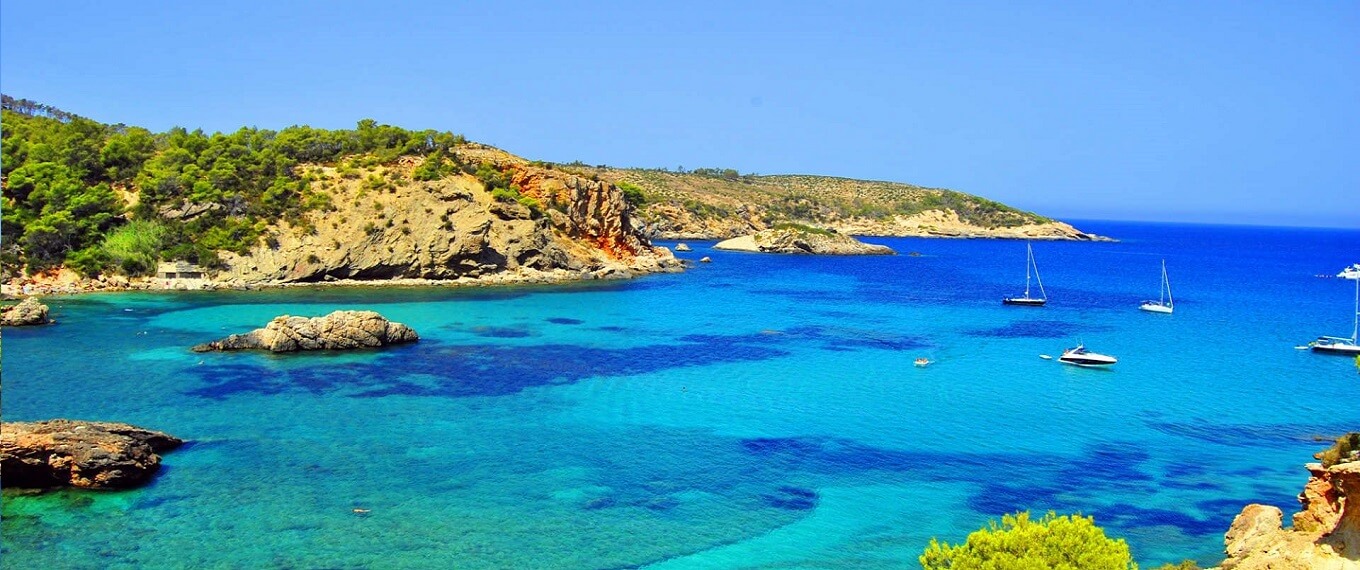Awesome Mediterranean yacht sailing places in 2021? The French Riviera has no shortage of trendy outposts, but St Tropez earns extra points for its recent revamp along Pampelonne Beach. YachtCharterFleet had the pleasure of heading down to St Tropez last year to check it out; and came back with some first-hand insight into the new (eco-friendly) beach club scene. After a morning exploring the pink streets of St Tropez, cruise over to Pampelonne in time for lunch. Be sure to book ahead for Club 55, the most iconic venue in the Cote d’Azur, and try and reserve a coveted table in the later lunchtime slot if you’re looking to rub shoulders with Hollywood heavyweights and the A-list elite. For some post-lunch entertainment, head to Verde Beach. Expect blast-from-the-past beats and dancing on the tables, as the St Tropez in-crowd transform Verde Beach into the most happening party in Pampelonne. Head back to the main port for dinner- L’Opera has got the ‘the dinner and a show’ concept down to an art.
The Ionian Islands are a great choice for a yacht holiday – as the sailing time between islands is short. Sailing here is also well sheltered, with easy holding anchorages. This allows for more time to be enjoyed onshore. The Ionian Islands include the legendary Corfu and Paxos, among 5 other islands. Each destination here is loaded with its own unique charm and drawcards. Between the sheer natural beauty and the wonderful Greek towns – the Ionian Islands is always a favourite cruising ground in this country.
Many may think the glitzy South of France is a victim of its own popularity but it’s still one of the most beautiful sailing destinations in Europe, if not the world. Start at celebrity haunt Saint-Tropez and make your way along the celebrated coastline stopping off at Cannes, Nice and the millionaire playground, Monaco. If you want to fit in, pack your finest clothes, charter a huge yacht and pose artfully on the deck every time you moor up. Discover more details on https://intersailclub.com/blog/destinations/the-best-mediterranean-yacht-cruises-in-2021/.
The base charter fee in essence refers to the hire cost of the yacht itself, with all equipment in working order in addition to the cost of food and wages for the crew during the entirety of the charter. This is essentially all the base charter fee covers with additional expenses often applicable on top. The base charter fee will vary from one yacht to another and this may be down to any number of reasons from size and on board amenities to the charter season. For instance, the base rate of a charter yacht may increase in “high season” and reduce during the “low season”. “High season” and “low season” refers to the busiest and slowest periods for yacht charters though this may appear misleading, as these peak times refer to periods of weeks as opposed to full seasons. In addition, you may find that a yacht is also more expensive during special events such as the Monaco Grand Prix, Cannes Film Festival and America’s Cup. Unless you are keen to charter a yacht for a particular “high season” event, choose your dates carefully as although a “high season” rate will be more expensive than the “low season” the two can sometimes share much of the same weather conditions. During the charter, the captain will provide a running account of the usage of the funds and, at the end of the charter, the captain will present a detailed accounting along with any unused funds in cash. If the APA balance runs low during the charter, the client is expected to provide the captain a sufficient amount in cash to cover the needs for the remainder of the charter. Since many charterers prefer not to carry quantities of cash, the charter broker can hold an amount and release it to the captain as needed.
Sailing tip of the day: Satisfied with your headsails? So was I, until one day I took a long, hard look up the luff of my genoa, making sure I inspected the leeward side as well. The sail had plenty of life left—it was still “crackly” when folded—but it looked far too full to me, and my forestay was sagging more than I’d have liked. The rig had been set up by a guy I trust, so there wasn’t a lot be done about the sag. Still, the boat was slow upwind and seemed tender, so I bundled the genoa into the car and took it to my favourite sailmaker. He agreed the cloth was still OK, but wasn’t impressed with the shape. I don’t know the ins and outs of the magic he wrought, but he shortened the luff by a few inches so I could tension it properly and somehow compensated for sag and flattened the entry. Now I sail a different boat. She stands up as she ought, she foots well and points higher, too—all because I took a critical look up the rig.
